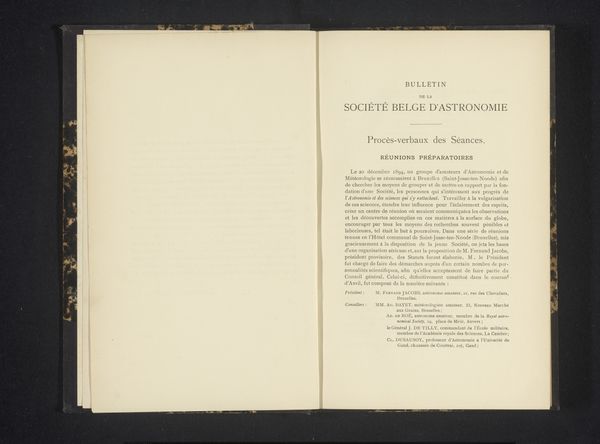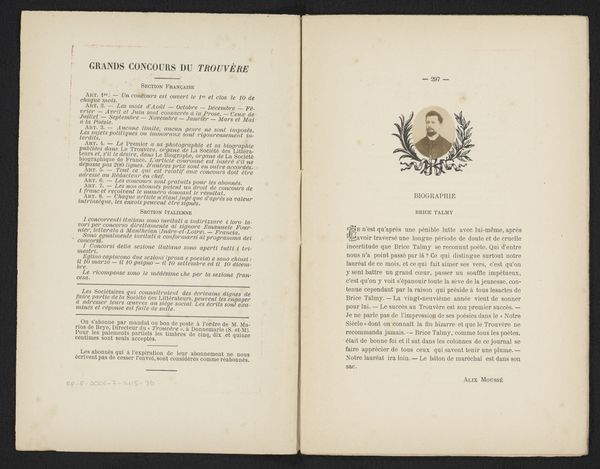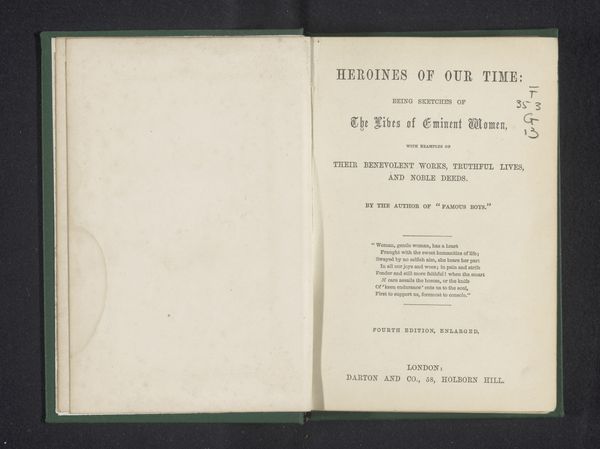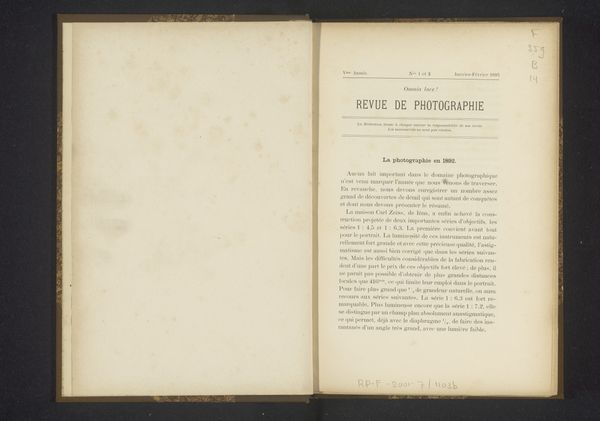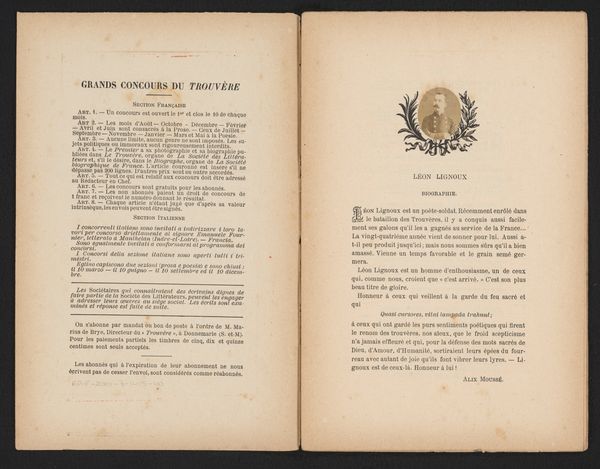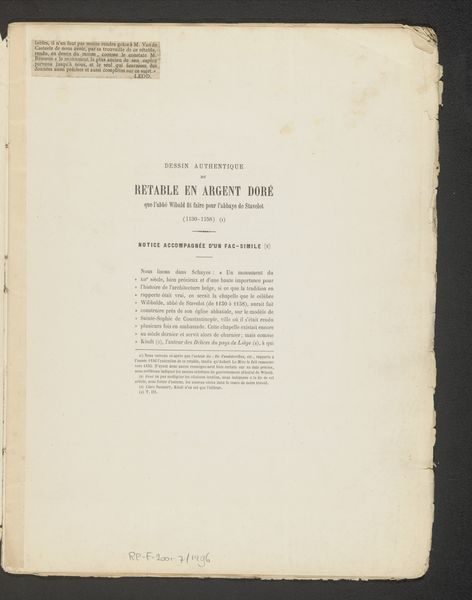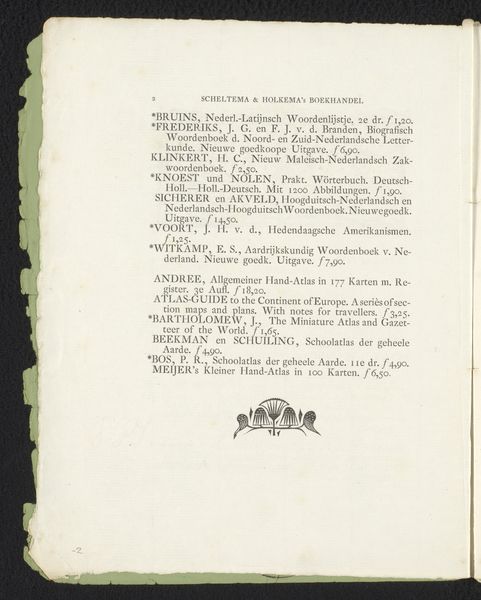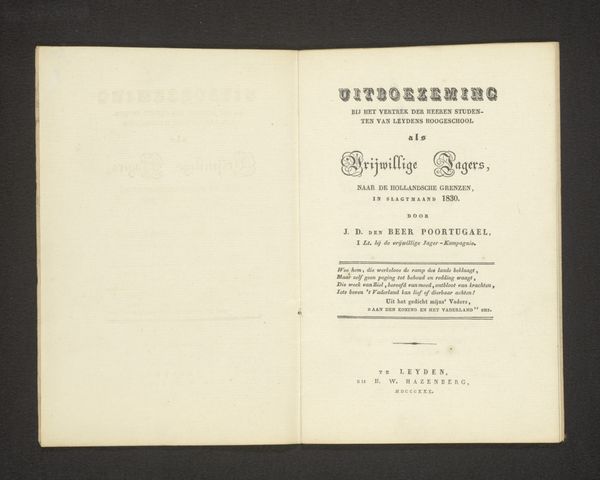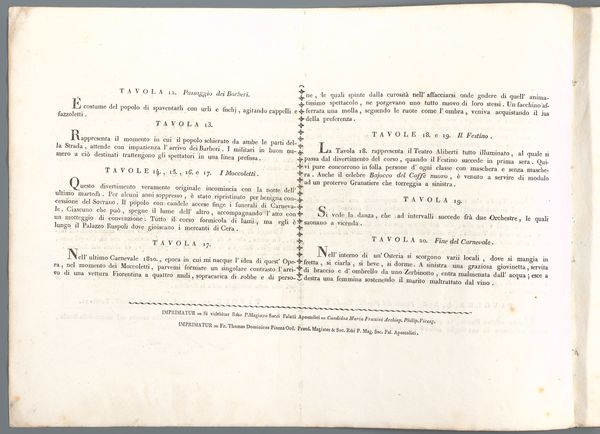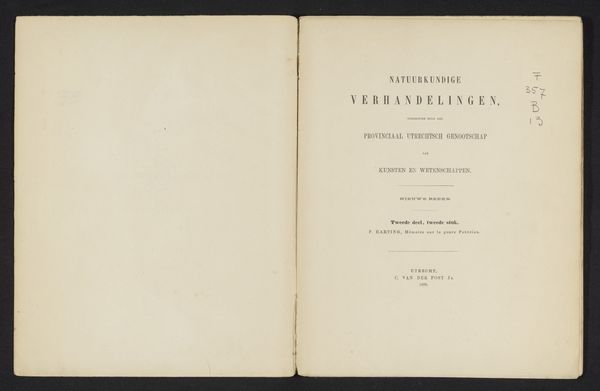
print, photography
aged paper
script typography
hand drawn type
photography
personal sketchbook
hand-drawn typeface
fading type
orientalism
stylized text
thick font
handwritten font
academic-art
historical font
Dimensions: height 221 mm, width 145 mm, thickness 31 mm
Copyright: Rijks Museum: Open Domain
This is the title page of "The Physiology and Pathology of the Blood," a book by Richard Norris, printed in London in 1882. Its pages are made of paper, likely produced through industrial methods increasingly common at the time, when mechanization allowed for mass production. The book’s knowledge is carefully typeset, line by line. Its contents, claiming to offer scientific insight into the very lifeblood of our bodies, reflects the growing authority of empirical science. The text promises not just physiology, but pathology – the study of disease. It reflects a society increasingly concerned with health, hygiene, and the scientific management of the body, made available not just to doctors, but to a wider, literate public. Consider how this book, printed and bound using industrial techniques, embodies a shift in the production and consumption of knowledge. It challenges the notion of the art object as something precious and unique, pointing instead to the social and historical context in which all creative works are made and circulated.
Comments
No comments
Be the first to comment and join the conversation on the ultimate creative platform.

